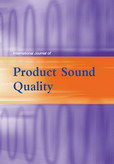Explore our journals
Browse journals by subject
Research picks
- AI calls time out for basketball fouls
Professional basketball is faster, more physical, and increasingly tactically sophisticated. Even the smallest foul can tilt the balance of a game. Now, research in the International Journal of Computational Systems Engineering shows how artificial intelligence, specifically machine vision, could bring unprecedented precision to one of the sport's most contested areas: the detection of fouls.
Machine vision is a form of AI that enables computers to interpret and analyse visual data. In this study, the researchers applied it to high-level basketball footage, with a specific focus on identifying and categorizing fouls in real time. The technology processes video frame-by-frame, isolating subtle movements, contact points, and spatial dynamics that often escape the naked eye, even that of an experienced referee.
The research centred on analysing games involving the Chinese national basketball team and their international opponents. The study found notable differences in foul patterns between the two sides. Chinese players, for instance, committed more fouls during opponents' shooting attempts, known as shooting-related defensive fouls. In contrast, their opponents were more likely to foul during dribbling plays.
The AI system also tracked subcategories of fouls, such as illegal use of hands or player collisions, revealing behavioural trends that go far beyond standard box-score statistics.
This new level of granularity possible with machine vision will have significant implications for the future of the game if it adopted as a standard. Conventionally, spotting fouls is down to human observation, referees, coaches, and analysts. Each of these characters is subject to the limits of perception, fatigue, and, inevitably, bias. Machine vision, by contrast, offers a consistent, objective view. It sees not just the contact, but the context: where on the court it occurred, at what angle, and how both players were moving in the moments before the foul.
For coaching purposes, this kind of data could be used to diagnose weaknesses or imbalances in a team's defensive or offensive behaviour. A pattern of specific fouls, if spotted early, might point to issues with footwork, positioning, or reaction time. These areas might all be addressed through tailored training. For players, especially those navigating the razor-thin line between aggressive and reckless play, the technology offers feedback with a clarity that a simple post-match video review cannot provide.
Perhaps most importantly, the research could reshape how referees are trained. Accurate, data-driven feedback on decision-making in live situations could improve both consistency and fairness. These are commonly two of the most persistent challenges in officiating high-speed sports.
Machine vision is unlikely to completely replace the human referee, but it may soon become an indispensable tool in their development, helping to reduce errors and improve the flow of the professional game.
Jia, X. and Diao, C. (2025) 'Feature extraction of basketball player's foul action using machine vision', Int. J. Computational Systems Engineering, Vol. 9, No. 10, pp.20–30.
DOI: 10.1504/IJCSYSE.2025.146812 - The digital lineman
A new data-driven model could improve the accuracy of residential electricity demand forecasting on a daily, or even hourly basis. The model, described in the International Journal of Energy Technology and Policy, might help utility companies better manage power grids as they become more reliant on variable renewable energy sources.
Shan Gao, Xinran Zhang, Lihong Gao, and Yancong Zhou of Tianjin University of Commerce, China, suggest that their research has addressed one of the main problems in the transition from conventional to sustainable electricity production supplying diverse residential settings.
Renewable electricity sources, such as solar and wind, are inherently intermittent. They do not produce a steady electricity supply throughout the year and moreover can drop to zero supply at any time during the day depending on weather conditions. And, of course, solar only works during daylight hours. Such variability makes it difficult for electricity grid operators to ensure that supply meets demand at all times. Accurate forecasting of electricity usage, particularly in residential settings where patterns are highly individual and sensitive to social routines, is now seen as essential for the stability and efficiency of so-called smart grids.
The researchers have developed a hybrid model that is less error-prone than other models. The new approach combines a Convolutional Neural network, which is particularly effective at identifying short-term patterns in datasets, with a Long Short-Term Memory network, a type of recurrent neural network well-suited to tracking longer-term dependencies in time series data.
Such hybrid models have been used successfully in other settings previously, but the team has also incorporated an attention mechanism into theirs. This is a tool borrowed from natural language processing that allows the system to prioritize the most relevant parts of its input data when making predictions. This dynamic filtering process improves the model's ability to respond to variations in household behaviour or external conditions. In addition, in order to account for systematic fluctuations in consumption, the model uses seasonal decomposition, a statistical technique that isolates regular seasonal trends, such as increased winter heating demand or reduced usage during the summer, from the overall dataset.
All of these tools combined allow the new model to recognize and adapt to subtle patterns in electricity demand. For example, it can distinguish between weekday and weekend routines, anticipating delayed morning energy use on Saturdays and Sundays, or adjusting for increased evening usage during colder months. The team has thus demonstrated a mean absolute percentage error as low as 0.76% for daily predictions and just 2.36% for hourly ones. These figures improve on existing models, the team suggests.
Gao, S., Zhang, X., Gao, L. and Zhou, Y. (2025) 'A novel residential electricity load prediction algorithm based on hybrid seasonal decomposition and deep learning models', Int. J. Energy Technology and Policy, Vol. 20, No. 5, pp.1–23.
DOI: 10.1504/IJETP.2025.146888 - Framing finance with ethical AI
In the world of high finance, companies are hedging their bets on Artificial Intelligence (AI). Indeed, AI has already been used in algorithmic trading and fraud detection. As the technology grows more powerful and autonomous, so there is an urgent need to put in place checks and balances to ensure ethical and valid use of these tools. Research in the International Journal of Business Information Systems now offers a structured response to the various challenges and proposes a practical framework to help financial institutions implement ethical AI systems grounded in transparency, interpretability, and accountability.
The researchers explain that "explicability" is key to the development and use of AI ethically in finance. Unfortunately, the term itself lacks a clear operational definition. It can be described as encompassing three interrelated dimensions: transparency (the ability to see how a decision was reached), interpretability (the capacity to understand that decision), and accountability (clarity over who is responsible). These ideas are particularly crucial in high-stakes domains such as lending and insurance, where algorithmic decisions can directly affect people's lives as well as company profits.
There are already examples of where opaque AI systems have reinforced existing inequalities so that credit-scoring models and insurance-pricing algorithms, trained on historical data, can disadvantage women and minority groups. This is not necessarily happening deliberately, but simply through the inherent biases in the training data. Whether intentional or not, the outcomes can still be damaging and also become harder to correct once automated systems are embedded in a company's systems.
The research in IJBIS, draws from an interdisciplinary research and expert interviews, introduces to develop a "maturity framework" that is designed to make explicability actionable. Rather than treating ethics as a checkbox exercise or a set of abstract ideals, the framework outlines incremental steps that organisations can, and perhaps should, take, based on their technological sophistication and the complexity of the AI models they employ.
The framework benefits from inherent adaptability, acknowledging from the start that a "one-size-fits-all" solution is neither realistic nor desirable. Instead, it offers a pathway tailored to different institutional contexts, encouraging continuous improvement over time. Among its recommended practices are adopting interpretable AI models, the inner workings of which can be readily understood by humans, creating internal ethics committees, and conducting regular audits for bias and fairness.
Solaimani, S. and Long, P. (2025) 'Beyond the black box: operationalising explicability in artificial intelligence for financial institutions', Int. J. Business Information Systems, Vol. 49, No. 5, pp.1–38.
DOI: 10.1504/IJBIS.2025.146837 - School's out, AI's in
Generative artificial intelligence is changing education. The tabloids would have it that students are using it to fulfil their assignments and teachers are using it to grade the papers. It sounds like a serious problem where no one is learning because nobody is teaching. But, the landscape is much more nuanced than that and these new tools could offer us a new model of teaching and learning, according to research in the International Journal of Information and Communication Technology.
The dystopian perspective is of students using generative AI to write their essays, create their artwork, and even carry out lab simulations. The teachers then simply feed this output to another AI to obtain an evaluation,. However, the reality is that generative AIs can offer highly personalized, responsive learning experiences that side-step the one-size-fits-all approach of conventional lessons. And, provided that students, and more importantly their teachers, are made aware of the limitations and the inherent biases of generative AI tools, there is the potential to reduce scholarly administration and allow teachers to engage with their students more directly as well as opening up new ways to learn.
Indeed, generative AI is not simply about faking an assignment, it can be used to produce new educational content, such as custom learning materials, which can be manually validated by the teacher. Such systems can respond dynamically to a learner's progress, interests, and comprehension, tailoring the next part of their instruction in ways previously impractical at scale.
Many language learners are familiar with teaching tools based on conversational agents that adjust to the user's pace and to their specific learning style and any prior knowledge of the language being learned. Feedback is immediate, context-sensitive, and targeted.
The research highlights the need for continued study into how generative AI can best serve as a tool for educational empowerment. As the technology advances, striking the right balance between innovation and human-centred teaching is needed to ensure that the future of education remains equitable, ethical, and genuinely transformative.
Wang, G. and Sun, F. (2025) 'A review of generative AI in digital education: transforming learning, teaching, and assessment', Int. J. Information and Communication Technology, Vol. 26, No. 19, pp.102–127.
DOI: 10.1504/IJICT.2025.146701 - Augmenting autism support
Augmented reality (AR) technologies are showing significant promise in supporting individuals on the autism spectrum, according to research in the International Journal of Learning and Change. The work shows how immersive digital tools might be used to improve communication, learning, and social interaction. Moreover, this work reveals a shift in how therapeutic support is delivered, so that it moves away from formal clinical spaces and into homes, schools, and other everyday environments.
Augmented reality, a technology that overlays digital content on to the real world through devices like smartphones, tablets, or AR glasses, has integrated into various areas of daily life. It can be used in education, for instance, to help students visualise abstract concepts. In the world of shopping, it even allows consumers to preview products, such as furniture, as they might look in their home or how an outfit might look as if they were wearing it.
Now, this versatile technology is being adapted for autism therapy, offering controlled, interactive environments in which individuals can learn at their own pace. Autism is a developmental condition often marked by diversity in communication, sensory perception, and social interaction. For those on the spectrum, real-world situations can often be overwhelming where loud noises, crowded places, and ambiguous social cues lead to anxiety or discomfort.
AR simulations provide a middle ground where realistic, but controllable experiences can be had. In this world, social skills and behavioural responses might be practised without the unpredictability of live interaction. One example of AR in action might be in emotion recognition.
Using AR, a person with autism might interact with a virtual character that displays a range of facial expressions, learning to identify and respond to emotions, a task that can sometimes be challenging in everyday settings. The AR interactions can be tailored to each person's progress, creating a responsive learning loop. Unlike conventional therapy sessions, which are often scheduled and structured, AR tools are portable and can be used flexibly, making them especially appealing to families and educators.
Shricharan, M., Raja, S.P. and Arulkumaran, G. (2025) 'Can autism skip out on augmented reality?', Int. J. Learning and Change, Vol. 17, No. 2, pp.121–156.
DOI: 10.1504/IJLC.2025.146611 - Wake me up and hit that AI!
Machine learning in education could tune up the way in which music is taught and learned. Such tools might offer instant, precise feedback and tailored support to students. They do, however, raise some interesting ethical questions about pedagogy, accessibility, and cultural integrity.
Historically, music instruction has always been about live teaching, often one-on-one, where students receive guidance based on their teacher's observations and interpretations of their abilities. Such direct mentoring is inherently limited by time, subjectivity, and the delays between performance and feedback. In contrast, machine learning (ML) systems now being developed promise to provide real-time, data-driven responses to a student's playing. Moreover, work in the International Journal of Information and Communication Technology, suggests that such tools might even detect issues that even the most attentive human teacher might miss and so provide important advice to the student.
These intelligent systems combine audio signal processing with predictive modelling rooted in deep learning. Deep learning is a type of artificial intelligence (AI) inspired by how the human brain processes information. It allows software to detect patterns in large datasets, such as musical performances, and make judgements or predictions based on those patterns. Once trained, these models can assess technical elements such as pitch accuracy, rhythm and tempo precision, dynamics, and even expressive phrasing.
For music students, such tools can offer feedback instantaneously, perhaps between lessons with human teachers. A student practising a piece can be alerted mid-performance about inconsistent tempo or missed notes and can see suggestions for improvement immediately, and so be ahead of the score when it comes to playing for their tutor or in an examination setting.
The systems also offer personalisation at a level difficult to achieve in traditional teaching. By monitoring a student's progress over time, machine learning tools can detect persistent challenges, such as uneven articulation or imprecise rhythm, and adapt future exercises accordingly. This responsive, data-informed support is especially valuable in contexts where access to expert instruction is limited, allowing high-quality feedback to reach learners beyond the conservatoire or music school.
Lu, L. (2025) 'AI-powered intelligent music education systems for real-time feedback and performance assessment', Int. J. Information and Communication Technology, Vol. 26, No. 18, pp.33–47.
DOI: 10.1504/IJICT.2025.146690 - Students move on up with career-boosting model
A new approach to career decision-making could boost students' confidence in their choices by not only offering information and guidance, but by helping them believe in their ability to choose wisely. The research International Journal of Computational Systems Engineering draws on social cognitive theory. This theory emphasizes how individuals learn and make choices by observing others and reflecting on personal experiences. By incorporating this theory into the new model for offering careers advice, the researchers say their approach can strengthen student self-efficacy, their level of confidence in their own abilities.
The new model builds on what the researchers call the "implicit feature matrix". These are the often unspoken, unconscious beliefs and assumptions that shape how students perceive different careers. These internal influences, which may arise from family expectations, past successes or failures, or cultural narratives, can nudge students towards particular choices and away from others. By identifying and incorporating these hidden factors into the new model, it is possible to produce more nuanced and accurate careers advice. This effectively overrides the assumptions and biases that might otherwise guide a student down a potentially unsuitable career path.
Conventional careers advice focuses on external characteristics, such as a student's grades, their interests, and their stated preferences. It then attempts to match the student's profile to suitable occupations. Unfortunately, such an approach can rely too heavily on stereotypes or statistical clustering and ignores the deeper motivational dynamics. The new model demonstrates has greater "structural validity" and captures how various psychological and social influences interact to shape choices. One of the distinctive features of the model is that it uses particle swarm optimization, a computational technique inspired by the coordinated movement of social animals such as bees.
In this technique, individuals learn how to behave by observing and adapting to the behaviour of others in the group. In the educational context, students are the individuals, or agents, in the swarm, and can strengthen their self-efficacy by engaging with peers, learning from each other's successes and strategies, and refining their own paths accordingly. This approach thus introduces a social-learning component to careers advice that goes beyond simple self-reflection and encourages communication skills, empathy, and collaborative problem-solving.
Zhou, Q. (2025) 'Particle swarm optimisation-based self-efficacy model for student learning and decision-making capabilities', Int. J. Computational Systems Engineering, Vol. 9, No. 10, pp.1–9.
DOI: 10.1504/IJIJCSYSE.2025.146794 - Hadoop, up, and away
A new approach to the storage and processing of large-scale data, called Hadoop-OptiStor is discussed in the International Journal of Reasoning-based Intelligent Systems. The optimisation framework is built on top of the widely used open-source system Hadoop and could deliver a more responsive and efficient backbone for big data infrastructure.
Apache Hadoop is an open-source framework for scalable, distributed computing. It can store and process large datasets across computer clusters using the MapReduce programming model. It was originally developed for inexpensive, off-the-shelf machines, but is now used to support high-end systems. Importantly, Hadoop can handle hardware failures automatically, ensuring reliable operation in large-scale environments.
Despite its benefits, Hadoop's traditional mechanisms, such as its approach to data replication for reliability and its task scheduling strategy, it has some limitations when it comes to huge data volumes. Processing delays, inefficient resource allocation, and data traffic bottlenecks are becoming more common in many real-world deployments.
Hadoop-OptiStor addresses these issues by reworking how Hadoop handles three core operations: data distribution, replica management, and task scheduling. The developers have carried out a practical deployment within a major internet company. Their new model achieved a 30% reduction in task execution time, a 20% decrease in system load, and a 40% increase in data throughput. These results reflect a more balanced use of computational resources and a notable gain in overall system efficiency.
Additionally, Hadoop-OptiStor uses machine learning to anticipate data access patterns and optimise scheduling. It can learn from historical usage data and make proactive adjustments, further reducing delays and inefficiencies.
Industries that rely on real-time data analysis, such as healthcare, finance, transportation, and energy, need infrastructure that can handle both the scale and speed of modern data streams. Hadoop-OptiStor offers a practical route to improving performance without making existing systems redundant. Its suitability for low-latency, high-throughput scenarios also makes it well-aligned with the needs of Internet of Things (IoT) environments, where devices continuously generate and respond to data.
Qi, Y. (2025) 'Optimisation of distributed storage technology for large-scale data based on Hadoop technology', Int. J. Reasoning-based Intelligent Systems, Vol. 17, No. 7, pp.11–20.
DOI: 10.1504/IJRIS.2025.146672 - Blurred lines between artist and audience
A research-led installation entitled Move in Tempo could reshape how we understand the intersection of human movement, machine learning, and artistic experience. The artwork was developed as part of a growing field at the convergence of interactive media art and computational design. As such, the project functions as both an artwork and an experimental platform. Those involved are thus using it to probe the ways in which physical motion, algorithmic systems, and audience engagement can be integrated into a single responsive environment. They discuss their findings in the International Journal of Arts and Technology.
At the centre of Move in Tempo is a dynamic interaction model. Visitors to the installation are invited either to move within the space, triggering algorithmic responses in light, sound, and digital imagery, or to observe choreographed performers navigating the same system. Crucially, both modes engage with the same technological infrastructure, designed to sense, interpret, and respond to movement in real time.
This infrastructure involves motion-sensing technologies, including depth cameras and inertial sensors. These are coupled to adaptive machine learning algorithms that process gestural input as a form of data. These inputs do not simply control pre-programmed responses, instead they contribute to the live construction of the installation's aesthetic and structural outputs. In effect, human movement becomes both the medium and the message.
The research team behind Move in Tempo frames the work as part of a broader inquiry into temporality in digital systems. Specifically, they investigate how the rhythms and pacing of human movement can be synchronized with computational processes. Rather than treating time as a background condition, the installation makes it an explicit parameter: tempo, duration, repetition, and variation all shape how the system responds and evolves. This has implications not just for the arts, but for any field where human-computer interaction relies on timing, gesture, or non-verbal cues.
Nogueira, M.R., Simões, J.B., de Carvalho, J.M. and Menezes, P. (2025) "'Move in Tempo': involving the audience through their movement in installation art", Int. J. Arts and Technology, Vol. 15, No. 5, pp.1–22.
DOI: 10.1504/IJART.2025.146787 - AI healthcare warning
The integration of large language models (LLMs), commonly referred to as generative artificial intelligence (AI), into healthcare systems is increasingly common. The hope is that LLMs will reduce the workload on clinicians, streamline administrative tasks, and improve access to medical information. A new analysis of the output of LLMs published in the International Journal of Electronic Healthcare urges caution in their use, however. The work highlights the need for a nuanced understanding of what these tools actually do, and more importantly, what they do not.
LLMs, are statistical algorithms trained on large amounts of text and used to generate plausible sequences of words based on known patterns. They may appear to have what is commonly referred to as artificial intelligence (AI), but they do not understand the content of their training datasets nor their output. Indeed, the output is shaped not by reasoning but by mathematical correlations between words and phrases in the data on which it was trained and so, in a sense, LLMs are really just very sophisticated autocomplete systems.
The distinction between the received wisdom concerning AI and the workings of LLMs is critical, especially in the context of healthcare. The uncritical reliance on seemingly fluent and authoritative output from an LLM could be a matter of life or death when that output contains errors or worse, wholly incorrect 'hallucinations'.
There are also concerns regarding inherent bias in LLMs. Given that they are built on human-generated data, there is the possibility that said data contains embedded social, cultural, and institutional biases. These can manifest in outputs that inadvertently reinforce health disparities, particularly for patients from underrepresented or marginalised groups. For instance, if a model is trained primarily on data from Western clinical populations, its diagnostic suggestions or educational content may be less relevant, or even misleading, for patients with different backgrounds or needs.
Healthcare is not a static field; it is what scholars call a complex adaptive system, meaning that small changes can produce wide-reaching effects. The introduction of LLMs could subtly reshape how care is delivered, how records are kept, or even how professional expertise is perceived. Over time, increased reliance on AI-generated documentation or advice could deskill clinicians, shifting responsibility from trained professionals to automated systems. Meanwhile, patients may begin to see AI as a substitute for human attention, altering expectations around trust, empathy, and accountability in care.
In the light of these various risks, the research advocates for a model of reflexive governance, a flexible and responsive framework for monitoring and regulating AI in healthcare. This approach would replace rigid, one-time assessments with ongoing oversight that can adapt to new uses, emerging harms, and shifting ethical considerations. Crucially, such governance could and should go beyond technical safety to include values like equity, transparency, and patient autonomy.
Salzmann-Erikson, M., Göras, C., Lindberg, M., Arakelian, E. and Olsson, A. (2025) 'ChatGPT in complex adaptive healthcare systems: embrace with caution', Int. J. Electronic Healthcare, Vol. 14, No. 6, pp.1–17.
DOI: 10.1504/IJEH.2025.146764
News
Three Inderscience journals announced as open access-only titles
Inderscience's Editorial Office is pleased to announce that the following titles
- International Journal of Intercultural Information Management
- International Journal of Immunological Studies
- International Journal of Instrumentation Technology
are now Open Access-only journals. All accepted articles submitted from 4 July 2025 onwards will be Open Access, and will require an article processing charge of US $1600.
Four Inderscience journals announced as open access-only titles
Inderscience's Editorial Office is pleased to announce that the following titles
- International Journal of Applied Management Science
- International Journal of Information and Decision Sciences
- International Journal of Internet Manufacturing and Services
- International Journal of Learning Technology
are now Open Access-only journals. All accepted articles submitted from 30 June 2025 onwards will be Open Access, and will require an article processing charge of US $1600.
Three Inderscience journals announced as open access-only titles
We are pleased to announce that the following titles
- International Journal of Business Governance and Ethics
- International Journal of Electronic Marketing and Retailing
- International Journal of Medical Engineering and Informatics
are now Open Access-only journals. All accepted articles submitted from 25 June 2025 onwards will be Open Access, and will require an article processing charge of US $1600.
New Clarivate Web of Science 2025 impact factors for Inderscience journals
Clarivate has released its latest impact factors, and Inderscience's Editorial Office is delighted to report that many Inderscience journals have increased their impact factors, particularly the International Journal of Hydromechatronics and International Journal of Mobile Learning and Organisation.
The International Journal of Hydromechatronics, International Journal of Mobile Learning and Organisation and International Journal of Bio-Inspired Computation have achieved particularly high scores, and the International Journal of Automotive Technology and Management, International Journal of Entrepreneurship and Small Business, International Journal of Information and Computer Security and International Journal of Vehicle Performance have earned their first ever impact factors.
Impact factors can be found on all indexed journals' homepages. We thank and congratulate all the editors, board members, reviewers and authors who have played their part in these latest indexing achievements.
New 2024 Scopus CiteScores for Inderscience journals
Scopus has now released its 2024 CiteScores. Inderscience's Editorial Office is pleased to report that many Inderscience journals have achieved high CiteScores, particularly the following titles:
- International Journal of Hydromechatronics
- International Journal of Bio-Inspired Computation
- International Journal of Mobile Learning and Organisation
- International Journal of Green Economics
- International Journal of Integrated Supply Management
- International Journal of Web and Grid Services
- Journal for International Business and Entrepreneurship Development
The International Journal of Continuing Engineering Education and Life-Long Learning, International Journal of Intelligent Engineering Informatics, International Journal of Internet Marketing and Advertising, International Journal of Work Innovation have all significantly improved their scores, while the International Journal of Mobile Communications has reached the landmark of earning its first CiteScore.
All CiteScores are available on indexed journals' homepages. The Editorial Office thanks all of the editors, board members, authors and reviewers who have helped to make these successes possible.




